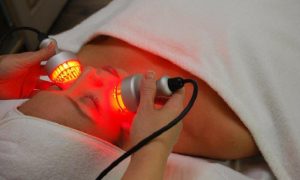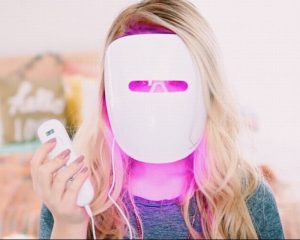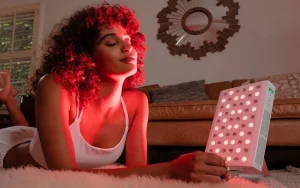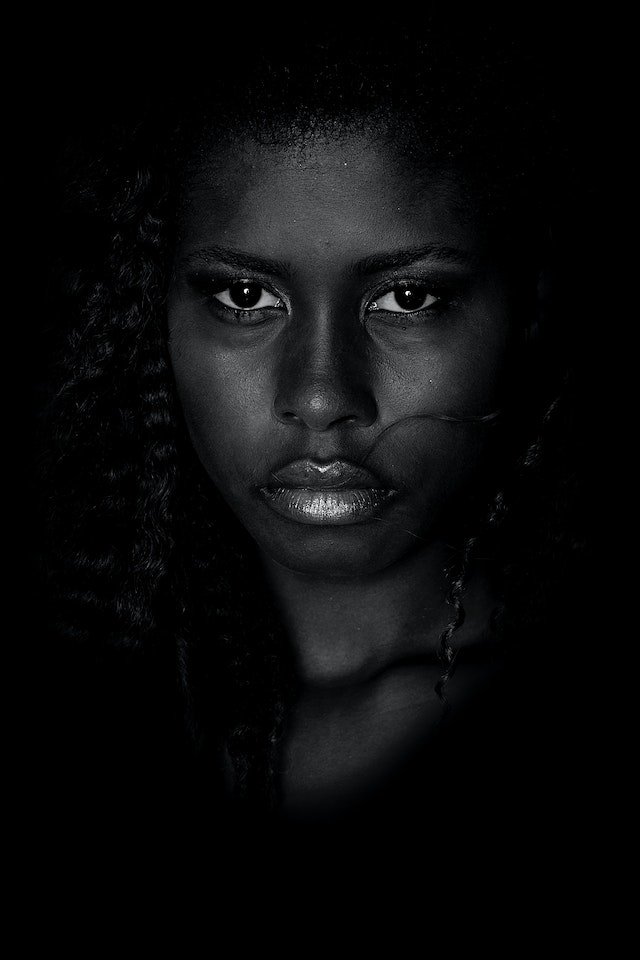Introduction:
In recent years, the spotlight has turned to Red Light Therapy (RLT) as a potential remedy for a myriad of skin issues and even broader medical conditions. From wrinkles and scars to the relief of pain and inflammation, RLT has garnered attention. This in-depth guide aims to shed light on the evolution, working mechanisms, safety considerations, and the ongoing debate surrounding its effectiveness.
Evolution of Red Light Therapy:
The journey of red light therapy began with NASA, experimenting initially with its effects on plant growth in space and subsequently for accelerating wound healing in astronauts. This early exploration opened doors to diverse applications, leading to its integration into photodynamic therapy and sparking further research into its potential health benefits.

How Red Light Therapy Works:
At its core, RLT relies on the interaction between low-wavelength red light and the mitochondria in body cells, often referred to as the “power plant” of cells. By providing a surge of energy, RLT aims to enhance cellular functions, stimulate collagen production, boost fibroblast activity, improve blood circulation, and mitigate inflammation. These combined effects contribute to the therapy’s purported ability to enhance skin health and address various skin conditions.
Common Names for Red Light Therapy:
Understanding the various monikers associated with red light therapy becomes crucial for those navigating the diverse discussions surrounding its applications. From low-level laser light therapy to terms like biostimulation, photobiomodulation, and phototherapy, recognizing these names provides clarity amidst the evolving landscape of this therapeutic approach.
Applications of Red Light Therapy for Skin:
Red light therapy has been promoted as a versatile treatment for an array of skin conditions. From improving wound healing and reducing stretch marks to addressing wrinkles, fine lines, age spots, and common skin conditions like psoriasis, rosacea, eczema, and acne, its potential benefits are vast and diverse.

Effectiveness of Red Light Therapy:
Despite the growing interest and promising results from some studies, the overall effectiveness of RLT remains uncertain. Rigorous scientific validation, typically through large-scale, randomized, placebo-controlled trials, is lacking for many claimed uses. While certain studies show potential for specific conditions, the consensus among experts is that more extensive research is necessary to conclusively establish its efficacy.
Safety of Red Light Therapy:
One aspect where RLT seems to shine is its safety profile, at least in the short term and when used as directed. Unlike the potentially harmful ultraviolet (UV) light from the sun or tanning booths, RLT doesn’t pose similar risks. However, the long-term safety of devices using red light therapy remains unknown. Caution is advised, and consulting with a dermatologist or qualified professional is recommended to ensure proper usage and minimize potential risks.

At-Home Use and Device Considerations:
While the allure of at-home red light therapy devices is undeniable, potential users should exercise caution. Devices available for personal use may operate at lower-wavelength frequencies, impacting their effectiveness compared to those used by dermatologists or trained professionals. Adhering to usage instructions, protecting the eyes during treatments, and seeking professional advice before making a purchase are critical steps to maximize benefits and minimize risks.
Other Medical Uses Under Investigation:
Beyond its applications in skincare, red light therapy is under investigation for various medical uses. These include reducing side effects of cancer chemotherapy, alleviating pain and inflammation associated with conditions like ankle tendonitis, rheumatoid arthritis, carpal tunnel syndrome, and osteoarthritis of the knee. Additionally, it is explored as a preventive measure for recurring cold sores.

Misconceptions and Internet Claims:
As with any emerging therapy, red light therapy has its share of misconceptions and unverified claims. It is essential to separate fact from fiction. Scientific evidence does not support its use in weight loss, cancer treatment, cellulite removal, or addressing mental health concerns such as depression and seasonal affective disorder (SAD). other health problems
Considerations for Red Light Therapy:
Potential users need to weigh several factors before opting for red light therapy. These include insurance coverage, the frequency of treatments, the likelihood of achieving desired results, trust in the experience of the provider, and the appropriateness of the therapy for specific skin conditions. Seeking advice from healthcare professionals is paramount to make informed decisions.
Conclusion:
Red light therapy continues to captivate attention for its potential benefits in skin health and beyond. However, as the landscape evolves, a cautious approach is necessary. Thorough research, consultation with healthcare professionals, and mindful consideration of key factors are vital for those contemplating the integration of red light therapy into their skincare or medical regimen. As the scientific community conducts more extensive research, the true extent of its effectiveness and potential applications will become clearer. Until then, individuals are encouraged to approach red light therapy with a discerning eye and an informed perspective.










